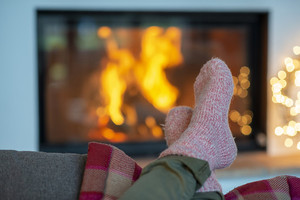The risk of burns due to the corona 19 epidemic, severe cold, and prolonged exposure to heating equipment

[부산=글로벌뉴스통신] Director Cho-Rok Kim, a dermatologist at Daedong Hospital, is experiencing a cold wave from the Arctic that froze the Han River. In particular, according to the Meteorological Administration, by this weekend, the minimum morning temperature in the central interior region will drop to a maximum of -20 degrees Celsius, and the southern regions are also expected to drop below -10 degrees Celsius.
It is expected that the number of patients who refrained from going out in the unprecedented severe cold wave that came along with the third corona19 epidemic and unexpectedly visit the hospital due to burns while searching for a warm lower neck and heating equipment is expected. Winter, which is the fourth of the four seasons, usually runs from December to February. It is the coldest season of the year due to the low temperature, and the length of the day is short due to the late sunrise and early sunset.
In order to avoid the cold in winter, heating devices such as electric blankets, stoves, and hot packs to keep our body warm are often used in daily life. Incorrect use of a heating device that makes you forget the cold may result in low-temperature burns.
Burns are caused by applying heat to the skin. The degree of burns is determined by the intensity of the applied heat, the contact time, and the ability to conduct heat of living tissues. If the temperature is below 45 degrees Celsius, there is little tissue damage, but at 45 to 50 degrees Celsius, partial cell damage occurs, and if it is above 50 degrees Celsius, the protein component of the cell is modified.
Low-temperature burns are damage caused by exposure of the skin for a long time in a relatively low temperature environment of about 40 to 50 degrees Celsius. If the skin is exposed to heat for a long time, blood circulation to the affected area decreases and accumulated heat cannot move to other areas. The temperature of the area rises, causing burns.
The main symptoms include ▲ pigmentation ▲ red spots ▲ febrile erythema ▲ itching ▲ blisters. Unlike general burns, low-temperature burns are often difficult to recognize symptoms as they progress slowly at low temperatures.
First aid is more important than anything else for low temperature burns. As with general burn treatment, first cool the burn area with cool water or physiological saline, apply burn scar ointment, etc., and wrap it with gauze. At this time, cooling with too cold water, ice, or water with strong water pressure may adversely affect the burn area, so you should refrain from cooling it. If the burn is severe, it is better to seek medical attention immediately after taking first aid.
“The skin surrounding the body plays a role in protecting our body from the outside, but it can be damaged if exposed to heat, light, or infection,” said Chorok Kim, a department of dermatology at Daedong Hospital. I think that occurs, but exposure to low heat for a long time can damage the skin, so it is necessary to pay attention to the use of heating equipment in winter.”
Copyright © Global News Communication GNA Unauthorized reproduction and redistribution prohibited
